The sonic assassin slays with a signature ESP tone scalpel that blurs digital and analog—running through 5150s, an Axe-Fx, and a few grimy, bewildering slicing stomps.
What would you get if you put the heaviness of Converge, the industrial sounds of Nine Inch Nails and Type O Negative, the catchiness of ’90s metalcore, the frantic delivery of Black Flag, and the sampled-chopped-and-glitched production of hip-hop into a blender and hit liquefy? You’d get 100 percent of your daily intake of Code Orange.
The band was formed—as the Code Orange Kids—in 2008 in Pittsburgh, Pennsylvania, by Eric “Shade” Balderose (vocals, keys, programming, and guitars), Reba Meyers (guitars and bass), Jami Morgan (drums and vocals), and guitarist Greg Kern (who left in 2010). The current lineup also includes bassist Joe Goldman and guitarist Dominic Landolina.
They’ve always played heavy and fast, rising quickly in the hardcore ranks with 2012’s Love Is Love/Return to Dust and 2014’s I Am King, but things took a dramatic, dense turn in 2017. (The band shortened their name ahead of the 2014 release.) Their Grammy-nominated, critically-acclaimed third and fourth albums, 2017’s Forever and 2020’s Underneath, incorporated all hues of heavy—drawn from all corners of crunch. In a 2020 interview with PG, Meyers explained the progression:
“We took as much of it into our own hands that we could—writing, recording, mixing, mastering—and it drove us crazy, but we knew if we really did this record how we imagined it, it could become something that we’re extremely proud of and is recognized by people beyond the niche world of hardcore that we come from. That was proven to us a little bit on Forever, because of the Grammy nod. We realized that if we really took what we do to the absolute fucking edge, we could make something important and bigger than ourselves. Especially bigger than our individual selves, because it’s a full-band effort.”
Creativity and performance are one thing, but how does a guitarist convey all the ideas in his or her head into a specific sound and where does that explorer mentality arise?
“We didn’t have shit growing up. I would borrow people’s old Carvin amps that barely worked, and through that you’d learn what really mattered. The crap gear sometimes would produce cool sounds that you wouldn’t expect, and your ears grow and evolve,” recalls Meyers. “Bottom line, what matters most is your hands, your creativity, and your performance. For that reason, I pick pedals that are loud and proud to speak in my language and Code Orange’s language.”
The afternoon before Code Orange’s middle slot for hip-hop duo $uicideboy$’s arena tour stop at Nashville’s Municipal Auditorium, Meyers pulled her gear aside and invited PG’s Chris Kies backstage to catalog her eviscerating setup. In this RR, she details her signature ESPs (and why they no longer have EMGs), shows how she breaks down the digital-versus-analog wall by pairing an Axe-Fx III with a 100W 5150, and chronicles the “toys” she enlists to converse in the band’s dialect.
Brought to you by D’Addario XPND Pedalboard.
Reba’s Ride
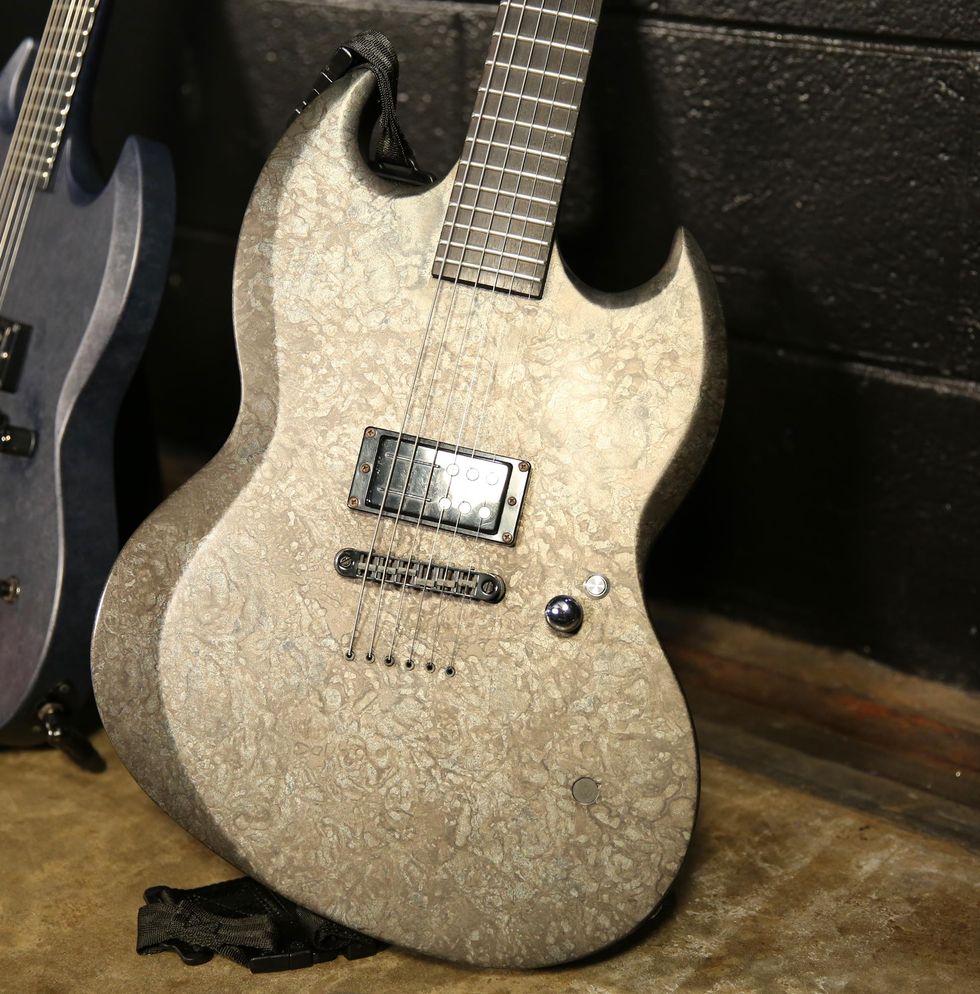
Code Orange’s Reba Meyers attacks the stage every night with her trusty signature ESP LTD Reba Meyers RM-600 that is a fresh spin on the Japanese brand’s Viper model. A string-through neck-through construction (a rare find on LTD models), a single EMG 81 in the bridge (with a custom matching orange font that pairs with its headstock logo—supposedly the only EMG pickup with orange lettering), a 6-in-line reverse headstock like some M-I and M-II models, a kill switch, and a mesmerizing satin black-marble finish give this 6-string stinger its own thumbprint. Other more-common features in this slightly offset double-cut are a mahogany body, a 3-piece maple neck, a Macassar ebony fretboard, and a locking TonePros Tune-o-matic-style bridge.
In her 2020 interview with PG, Meyers had this to say about the collaborative design process: “I started playing around on an iPad and took a reverse headstock ESP guitar and virtually glued it to a Viper body and threw a weird finish on it, sent that mock-up to ESP as a basic version, and, to my surprise, Tony [Rauser, artist relations] was really hyped on it! I didn’t expect them to let me change the headstock on a model that they’d been doing a certain way for so long, but the team approved it and they figured out a process to do the finish with Saran Wrap.”
One thing keen observers will notice is that this signature (and the next) no longer has the custom EMG 81 in it. Reba swapped hers out for Railhammer Chisel Bridge humbuckers. She says in the Rundown that the Railhammer balances out and thickens the tight, taut tone of her signature Viper. And as she puts it, “It’s fun, I just love trying new shit. I want to focus on playing—you can use the pickups and gear as a tool, but if I start thinking about it too much it messes with my creative flow.”
All her guitars take Ernie Ball Not Even Slinkys (.012–.056). She attacks the strings with various brands of picks (1.14 mm), and the band’s songs revolve around these tunings: drop B, drop B# (low-E string only), custom B minor (C#-B-D-F#-B-D) for “Bleeding In the Blur,” and a few other variations.
Righteous Reform
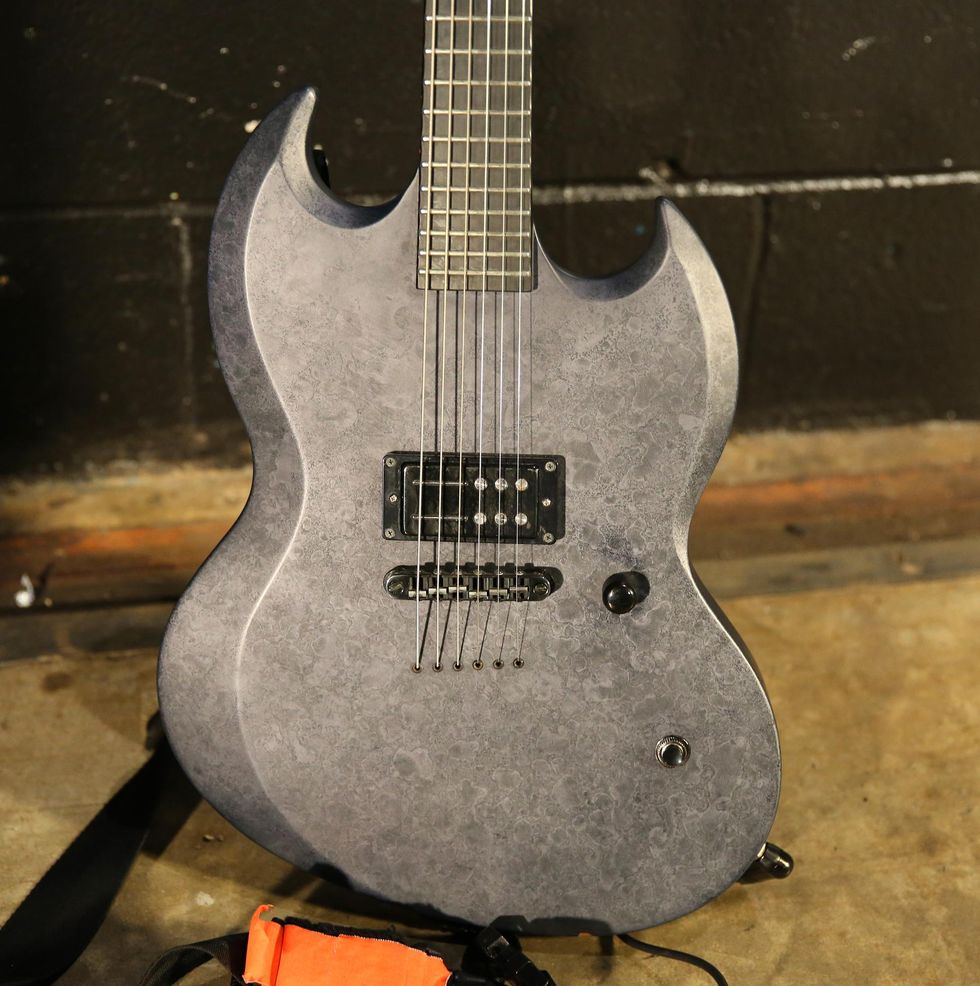
Here’s Reba’s axe in the shape of a Japanese-built ESP Custom RM-600 with a Railhammer Anvil bridge humbucker and similar specs and layout to her LTD. She typically plays this one until it’s beaten out of tune.
Drop-top Charger
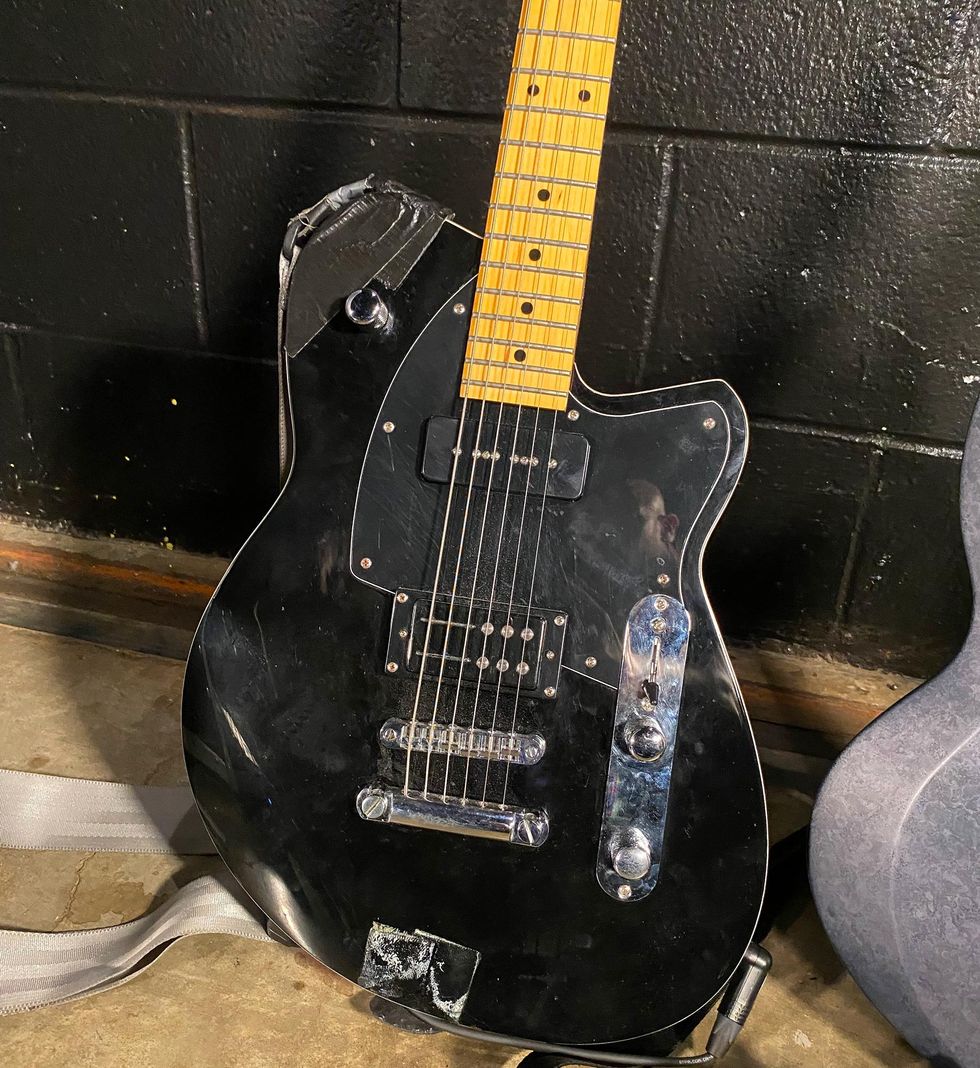
This Reverend Charger 290 is reserved for when Reba needs a B-minor guitar. She took out the bridge 9A5 pickup and dropped in another Railhammer humbucker. She says that this is a thicker-sounding instrument that really eats up power chords.
5150 Firepower
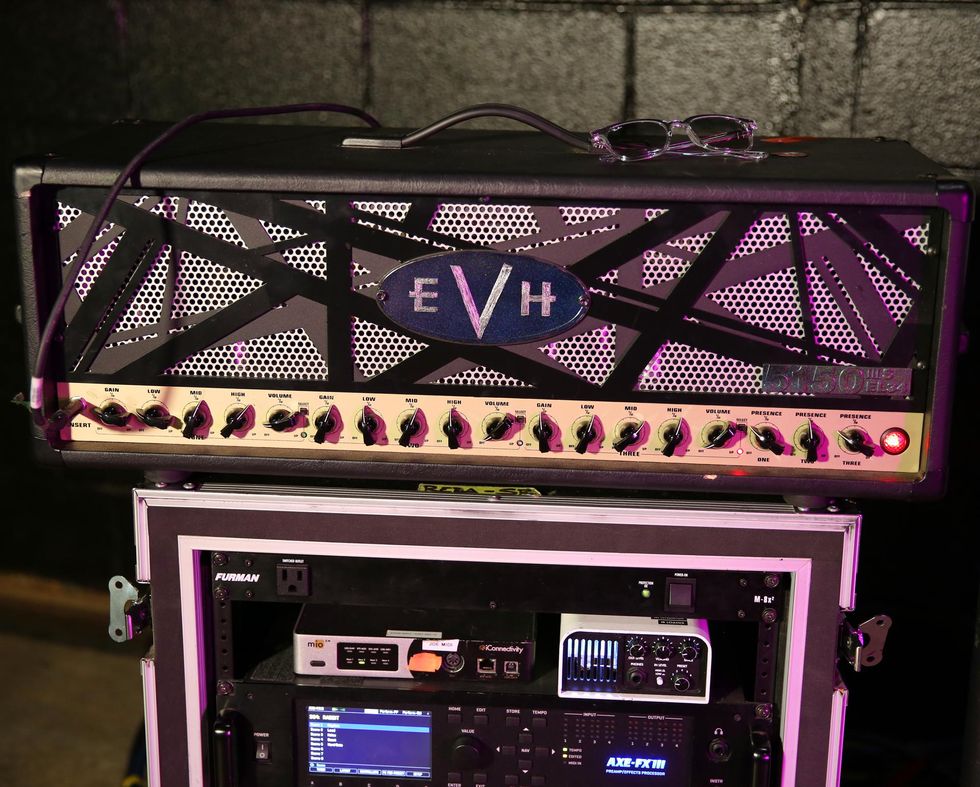
Reba has been harnessing the ferocity of the EVH 5150IIIS EL34 head for a few years. She digs the 100W beast because it has a “tight sound with lots of character.” Growing up playing Marshalls, her ear is used to the EL34s, and she remarks that Code Orange’s other guitarist, Dominic Landolina, plays an EVH 5150III 50W 6L6 head, so the two blend together like a twist cone.
Silver Panther
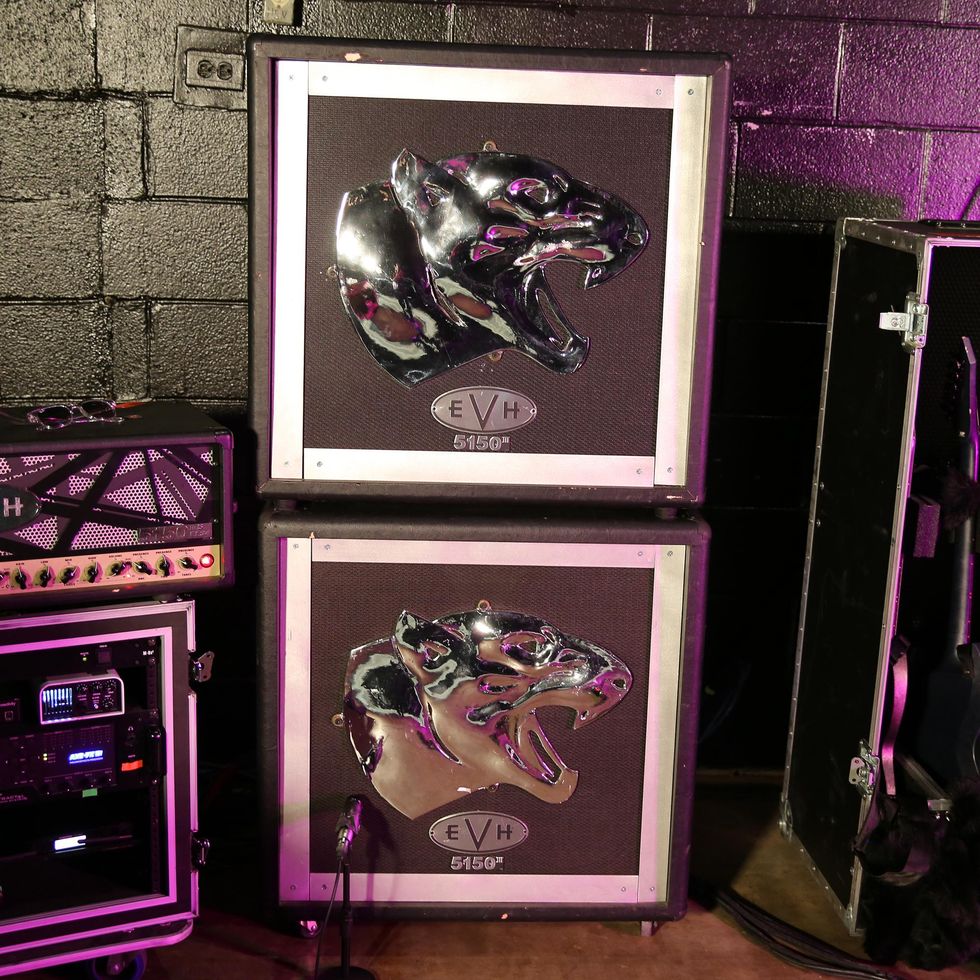
These EVH 5150III 4x12s have stock guts with their standard quad of Celestion G12 EVH 20W speakers, but Reba customized the look by applying the band’s longtime panther logo on the front.
Mini-Fridge Rack for Reba
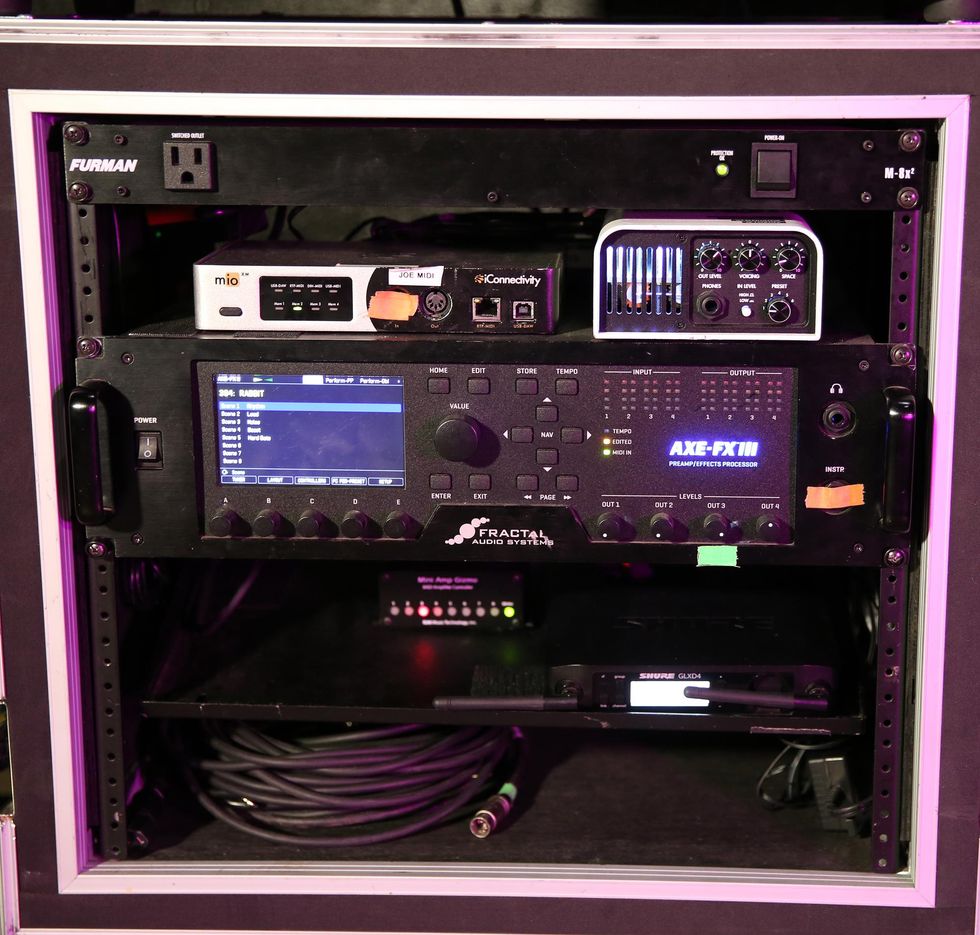
If her 5150s are the toast to her tone, the Fractal Audio Axe-Fx III lays on the butter. She runs it through the effects loop of her amp and uses it to coordinates channel switching. Reba notes that for some songs she uses it only as a gate, while for others she adds in precise modulation, delay, reverbs, and “noise.” And when it comes to the digital versus analog debate, Reba believes that “the Axe-Fx does have a digital sound, but rather than try and make it more analog-sounding, I lean into the digital crispness and program sounds that sit on top and cut through our dense mix.
“I love what I play and I am intentional with it, but I don’t want to be boxed into a gear obsession, because otherwise I’ll get lost. At the end of the day, we’re just playing with toys. We’re playing a music video game in real life.”
The rest of the rack features a Two Notes Torpedo Captor X that she uses for cab sims and sending a pure, direct signal to FOH so they can mix that with the SM57 mic on the 4x12s. A Shure GLXD4 Wireless unit keeps her untethered and a RJM Mini Amp Gizmo uses MIDI to switch the amp via the Axe-Fx III. (The iConnectivity MioXM MIDI Interface in the photo is for bassist Joe Goldman.)
Reba Meyers’ Pedalboard
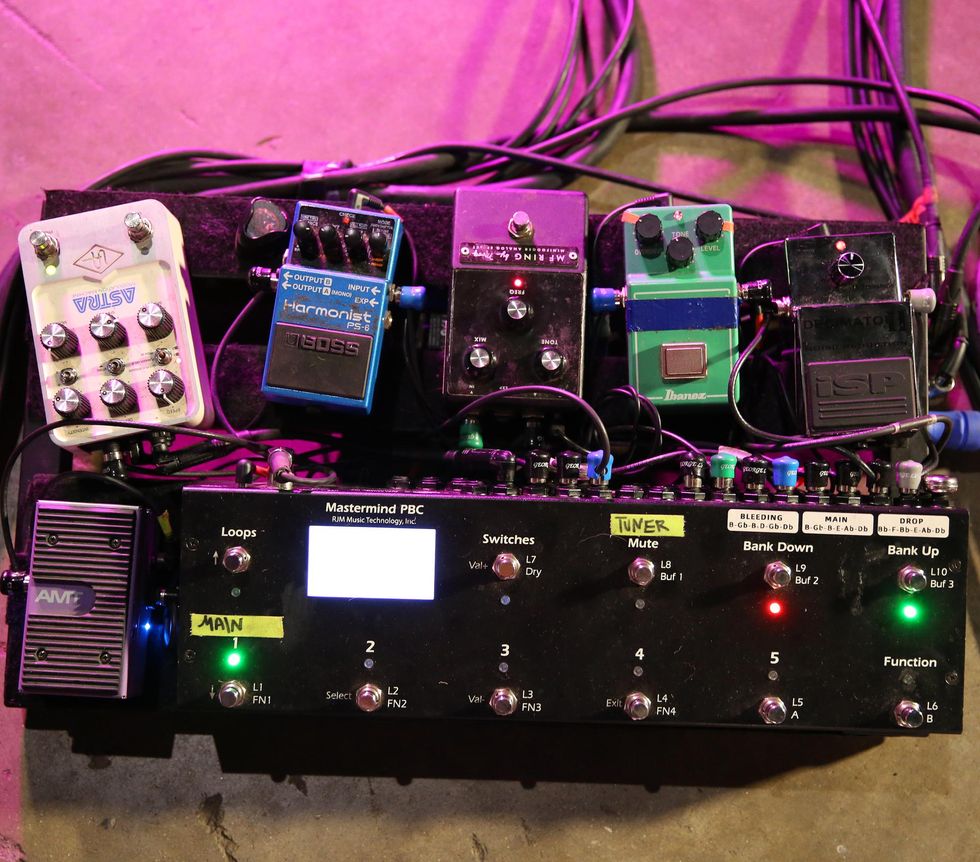
Starting off, Reba has two always-on pedals: the ISP Decimator and the Ibanez TS9 Tube Screamer. Her three stooges of noise include the Moog MF Ring Mod, Boss PS-6 Harmonist, and an AMT Electronics WH-1 Japanese Girl Optical Wah. The Universal Audio Astra modulation machine is a recent addition that she’s been finding ways to warp into the set. Everything is controlled by the RJM Mastermind PBC/10 and laced up with George L’s cables.




![Rig Rundown: Russian Circles’ Mike Sullivan [2025]](https://www.premierguitar.com/media-library/youtube.jpg?id=62303631&width=1245&height=700&quality=70&coordinates=0%2C0%2C0%2C0)




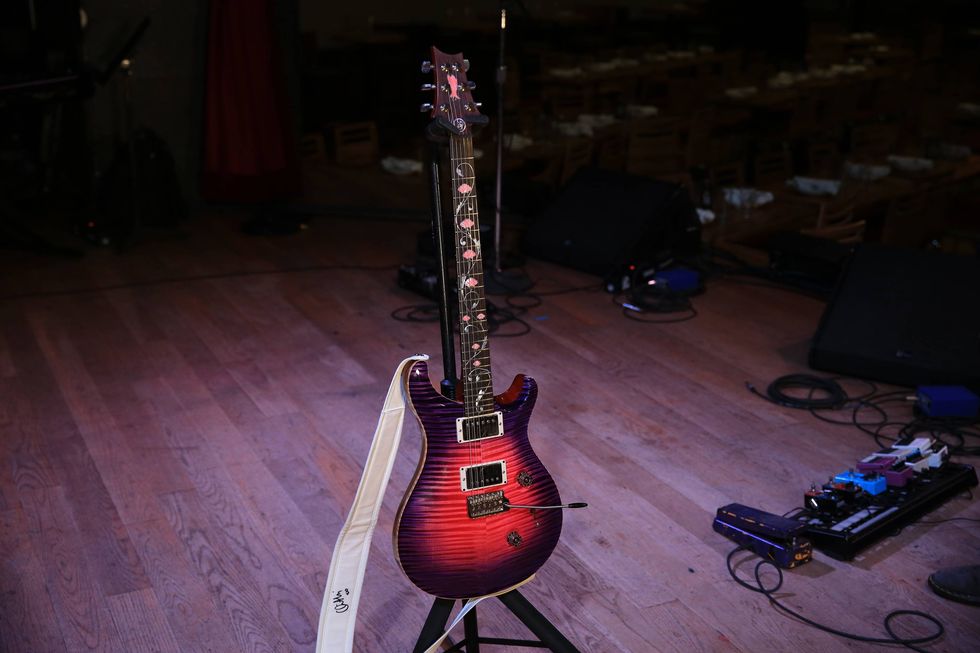
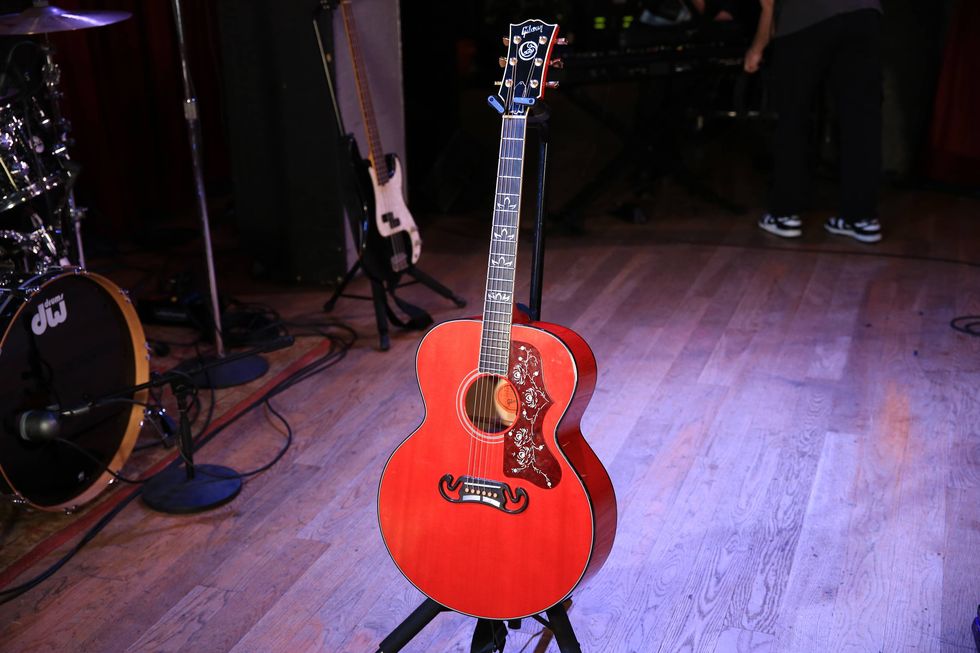
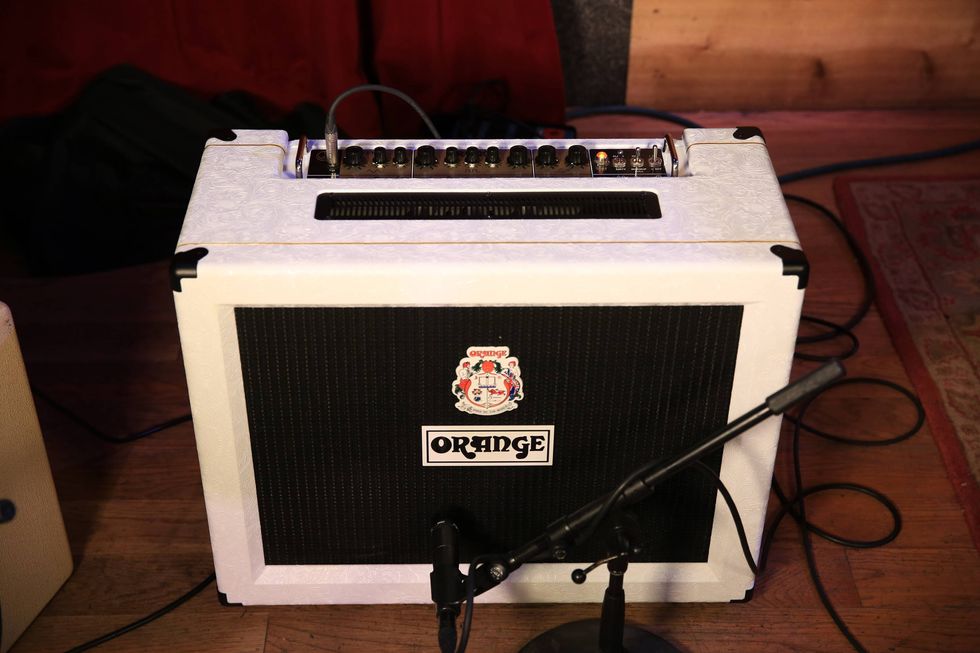
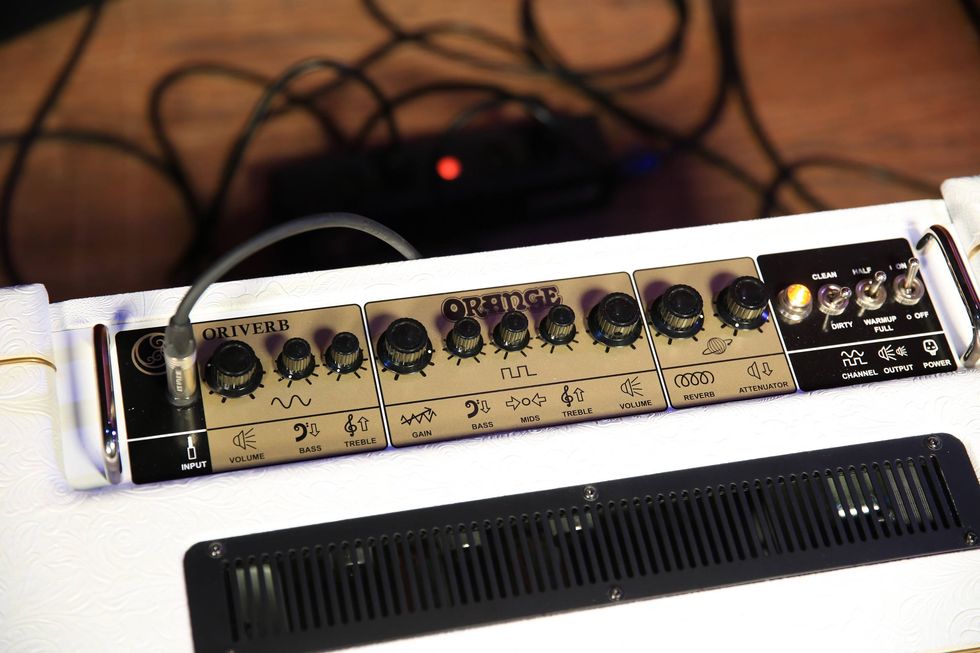
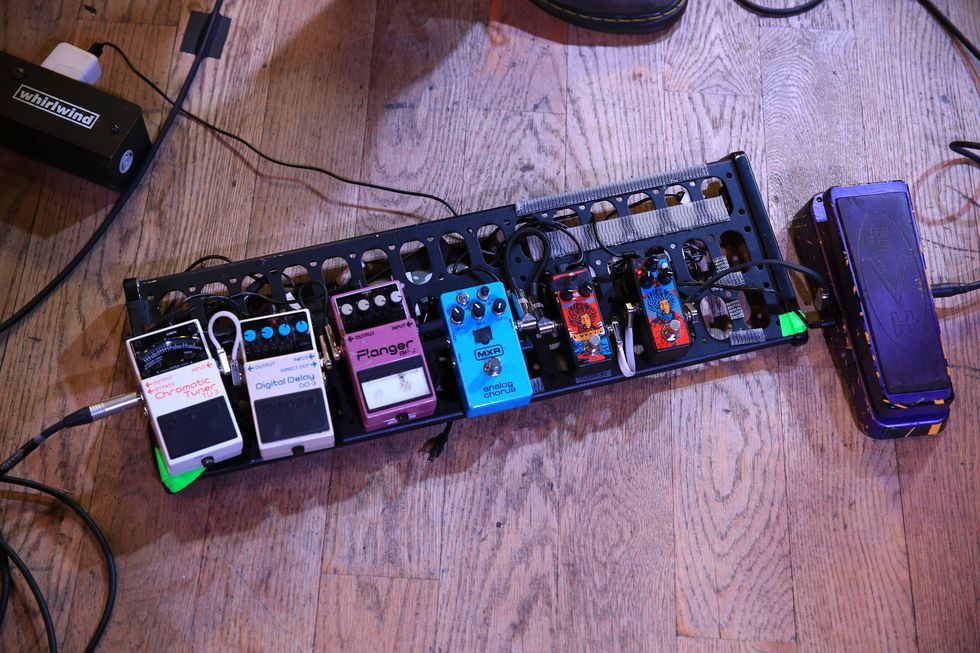







![Rig Rundown: AFI [2025]](https://www.premierguitar.com/media-library/youtube.jpg?id=62064741&width=1245&height=700&quality=70&coordinates=0%2C0%2C0%2C0)












 Shop Scott's Rig
Shop Scott's Rig







 Zach loves his Sovtek Mig 60 head, which he plays through a cab he built himself at a pipe-organ shop in Denver. Every glue joint is lined with thin leather for maximum air tightness, and it’s stocked with Celestion G12M Greenback speakers.
Zach loves his Sovtek Mig 60 head, which he plays through a cab he built himself at a pipe-organ shop in Denver. Every glue joint is lined with thin leather for maximum air tightness, and it’s stocked with Celestion G12M Greenback speakers.








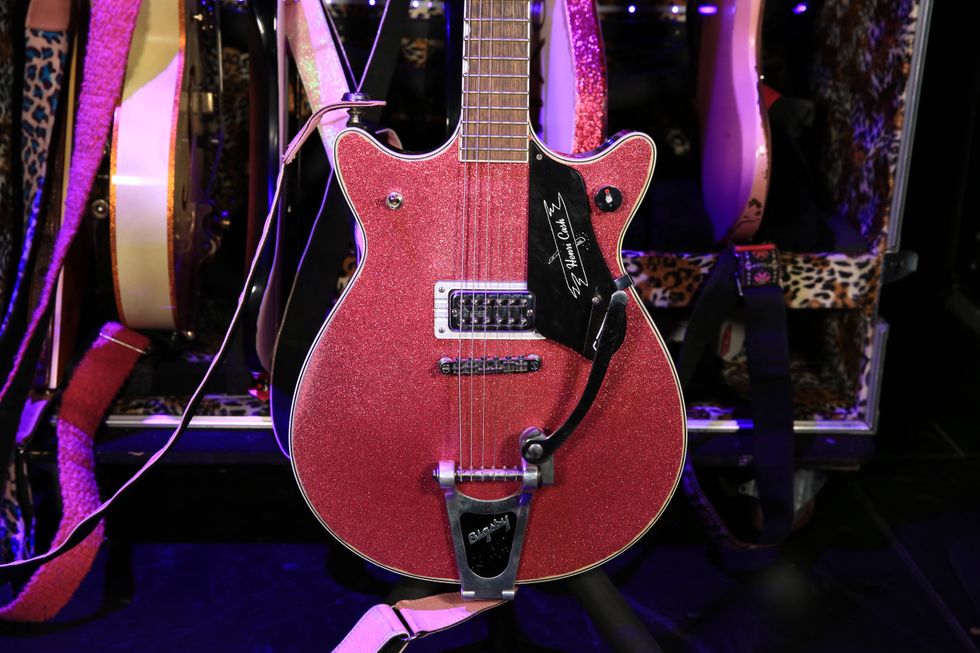
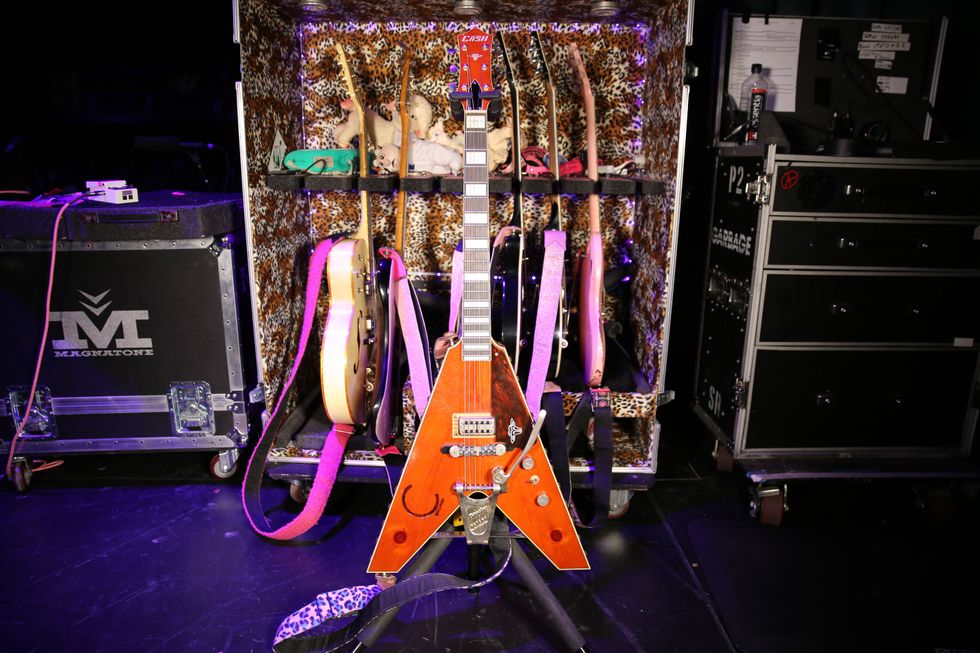
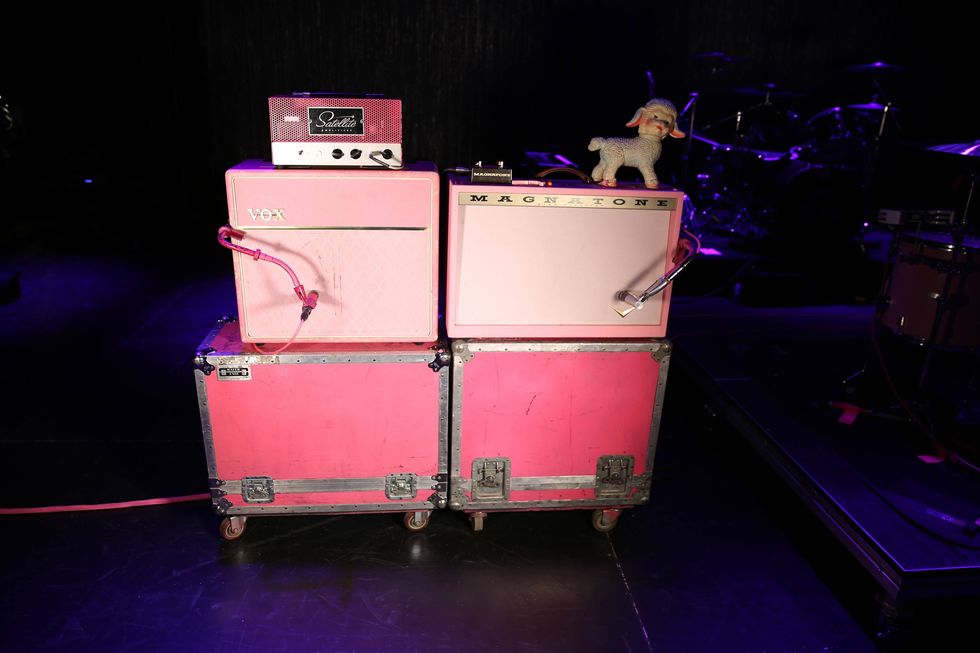
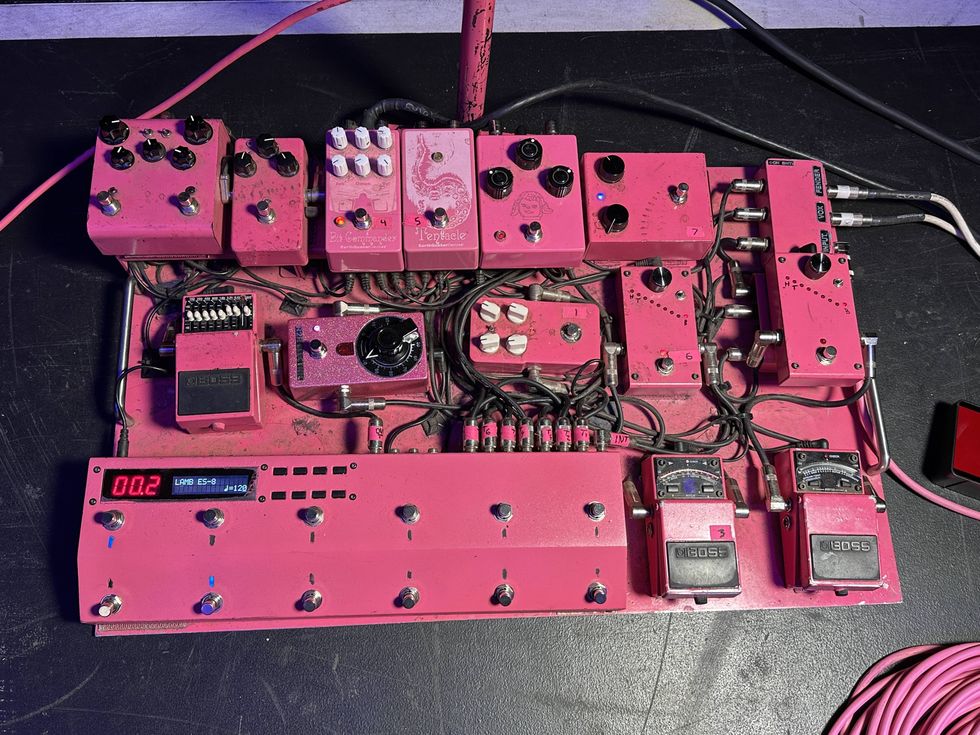
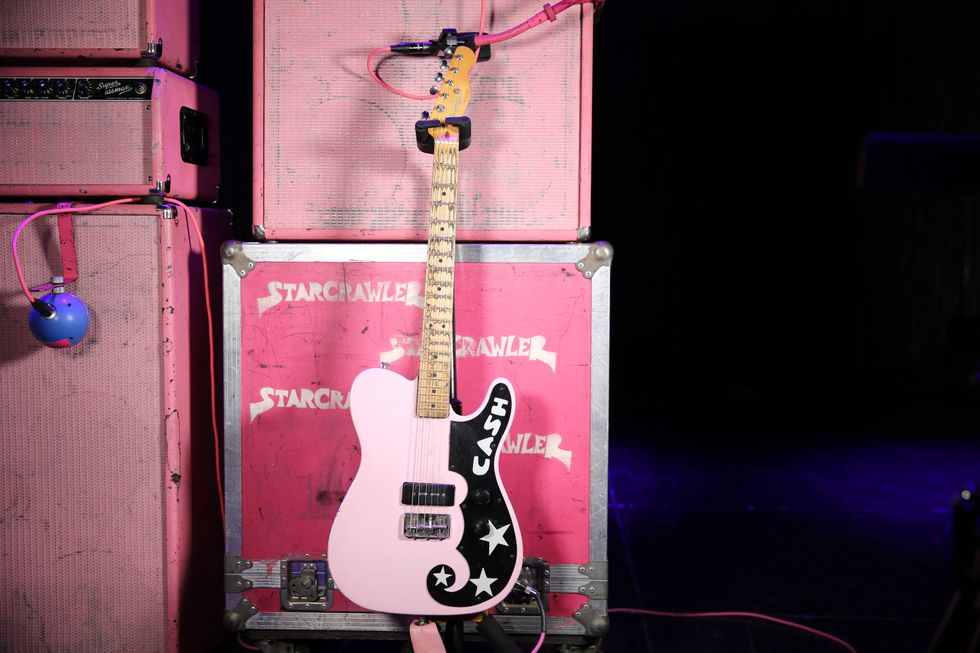
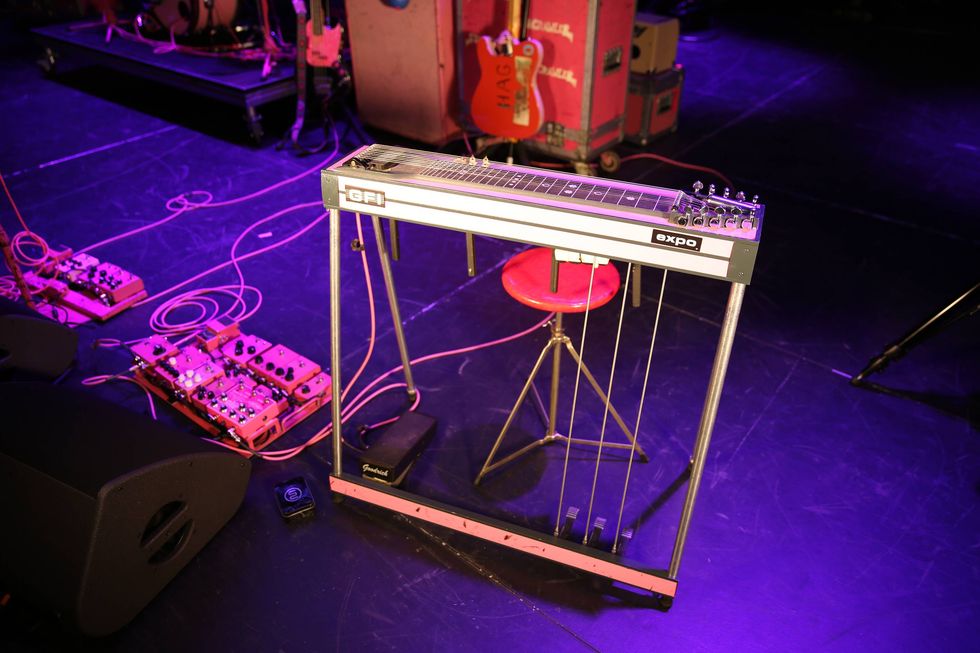

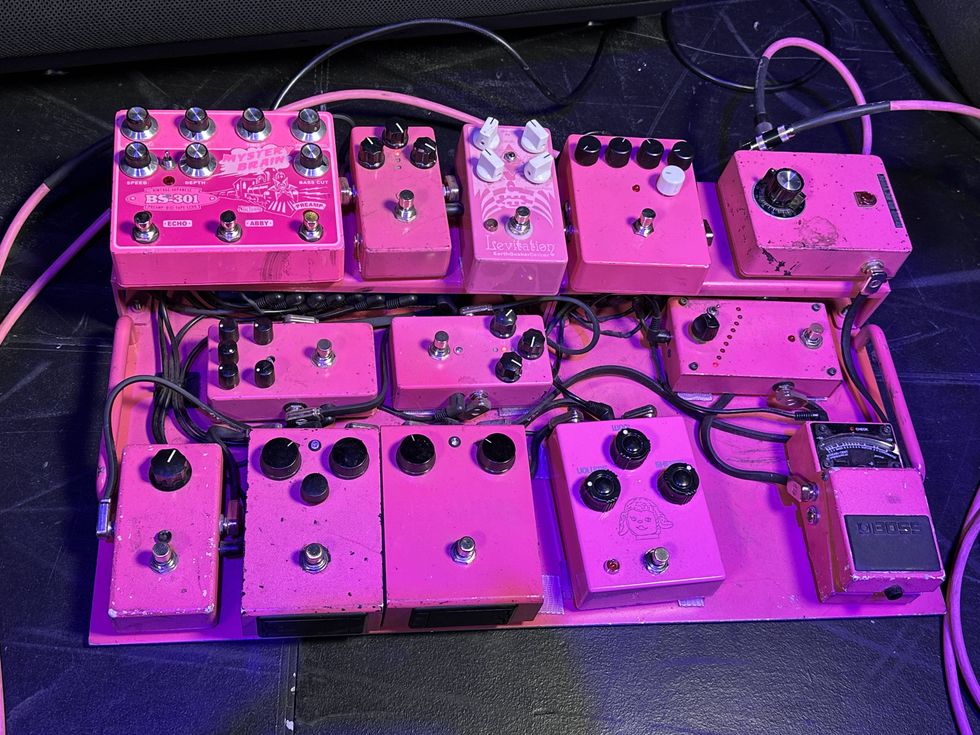

![Devon Eisenbarger [Katy Perry] Rig Rundown](https://www.premierguitar.com/media-library/youtube.jpg?id=61774583&width=1245&height=700&quality=70&coordinates=0%2C0%2C0%2C0)






